asteroid
Latest
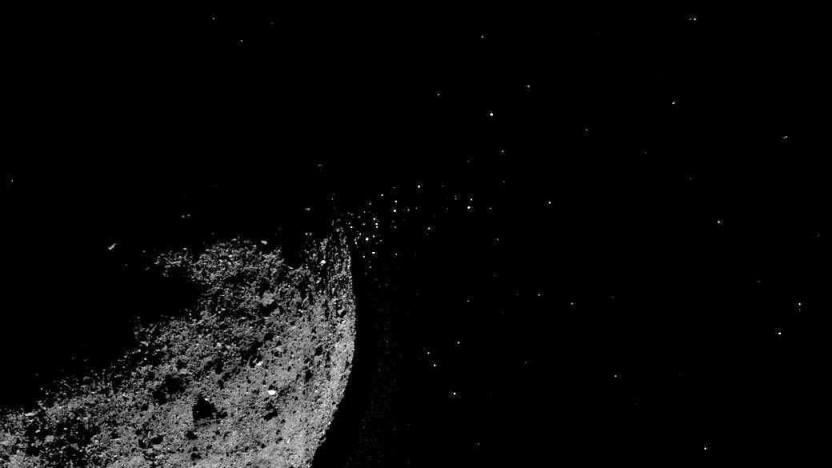
NASA reveals Bennu asteroid is spewing particles into space
An asteroid slightly wider than the Empire State Building has confused scientists by shooting out plumes of dust, as a new set of close-up images from NASA shows. Bennu, the near-Earth asteroid that NASA's OSIRIS-REx mission has been observing since December 31st, is already confounding scientists in a variety of ways.

Watch the Hayabusa2 probe touch down on asteroid Ryugu
Back in February, the Hayabusa2 spacecraft touched down on asteroid Ryugu to collect samples for scientists back home. Now, Japan Aerospace Exploration Agency (JAXA) has released a video of the brief contact between the probe and its target asteroid taken by a small on-board camera. It shows the moment Hayabusa2 fired a bullet into Ryugu's surface to kick up dust and fragments it can grab -- something the probe was supposed to have done back in October 2018 if not for the fact that the asteroid has much bigger gravel than its ground team expected.

Japan's Hayabusa2 lands on asteroid Ryugu to collect samples
Japan's Hayabusa2 spacecraft has successfully touched down on the surface of asteroid Ryugu to accomplish one of its ultimate goals: collect samples for scientists back on Earth. The probe has briefly landed on the asteroid to fire a bullet into its surface and kick up dust, rocks and any other debris that it can collect. Hayabusa2 has been hovering around Ryugu since mid-2018 and even dropped two landers on the floating rock to study its surface and take photos.

NASA's OSIRIS-REx has started orbiting asteroid Bennu
After NASA's OSIRIS-REx arrived at asteroid Bennu in early December, its ground team quickly started measuring and mapping out the celestial body. They needed all the information they could get in order to enter Bennu's orbit, since the asteroid has such a small gravity pull. Sounds like the scientists were able to get what they needed, because OSIRIS-REx has successfully started circling the asteroid at 2:43 PM ET on December 31st.

OSIRIS-REx spacecraft already found water on its target asteroid
It didn't take long for NASA's OSIRIS-REx spacecraft to glean valuable insights from the asteroid Bennu. The vessel has helped scientists discover water trapped inside Bennu's clays thanks to its two spectrometers, which spotted the hydroxyls (bonded hydrogen and oxygen atoms) that indicate interaction with water. Researchers believe Bennu's parent astroid hosted liquid water at one point, and these traces carried over to the smaller space rock.
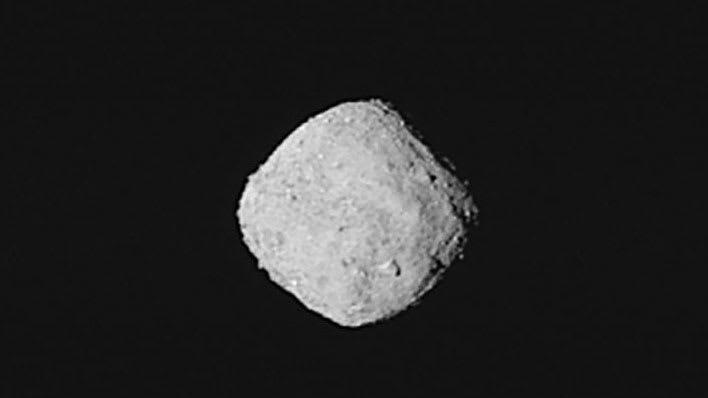
NASA’s OSIRIS-REx spacecraft has arrived at the asteroid Bennu
NASA's OSIRIS-REx spacecraft has officially arrived at the asteroid Bennu after a more than two-year-long journey. The spacecraft rendezvoused with its target around noon EST, and NASA confirmed the arrival a few minutes thereafter during a live event today.
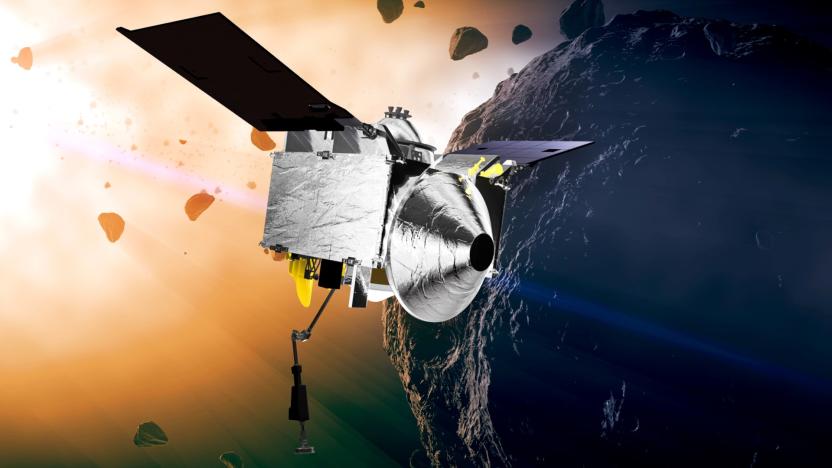
NASA successfully tests OSIRIS-REx robotic arm ahead of arrival
NASA's spacecraft OSIRIS-REx is just 75 miles from its destination and, just like you would near the end of a light, it's starting to stretch out. The craft successfully tested its Touch-and-Go Sample Acquisition Mechanism (TAGSAM), a robotic arm that will allow it to grab samples from the surface of the asteroid Bennu.
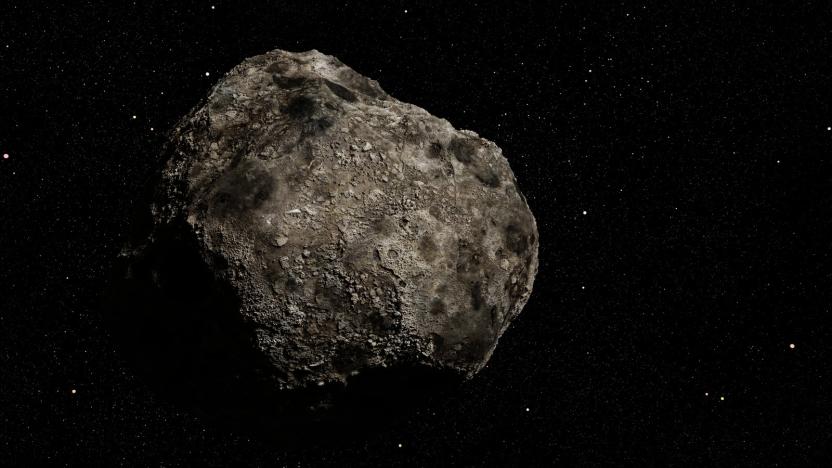
Blockchain company buys asteroid mining firm Planetary Resources
Planetary Resources just took an unusual turn on its path to asteroid mining. ConsenSys, a blockchain company created by Ethereum co-founder Joe Lubin, has bought Planetary Resources for an unspecified sum. It sounds supremely trendy given the combination of blockchain and private spaceflight, but it's a logical fit if you ask Planetary Resources' Brian Israel. Blockchain-based smart contracts represent a "natural solution" for commerce in space, Israel said -- there are no territorial divisions, so this may be an ideal way for people from various countries to "coordinate and transact."

Hayabusa2 probe landing delayed due to rugged asteroid surface
The Hayabusa2 spacecraft, launched by Japan's space agency JAXA, is currently studying the diamond-shaped asteroid Ryugu. After close examination of the target, a landing site was selected and touchdown for the probe was set for late October. But now, according to Phys.org, JAXA has informed reporters that the probe's deployment to the surface would be delayed until January.
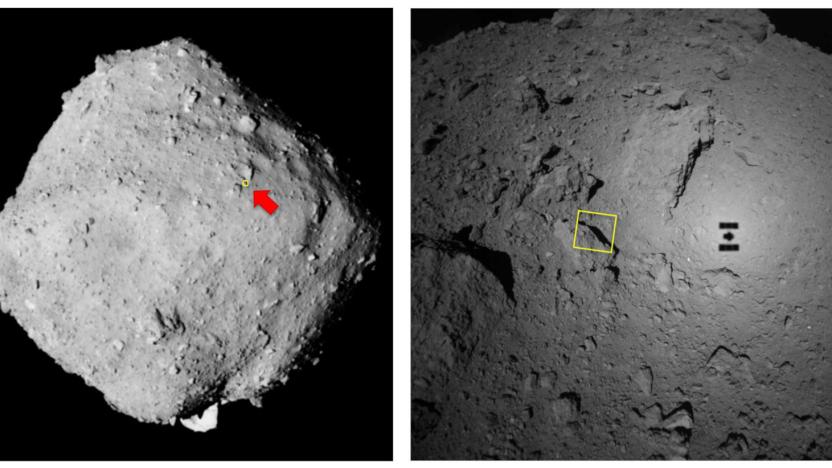
Hayabusa 2 probe snaps a close-up of its asteroid target
JAXA's Hayabusa 2 has taken the most high-resolution photo of its target asteroid, the 162173 Ryugu, we've ever seen. Unlike previous images that only showed Ryugu from afar, this one shows its surface in detail -- you can clearly see its texture and its lumpy rocks as if you're hovering right above them. The spacecraft's Optical Navigation Camera - Telescopic (ONC-T) snapped the image just as Hayabusa was zooming close to the asteroid to deploy the MINERVA-II1 rovers. ROVER-1A and 1B successfully touched down on the surface of the asteroid and have already started taking photos of their surroundings.
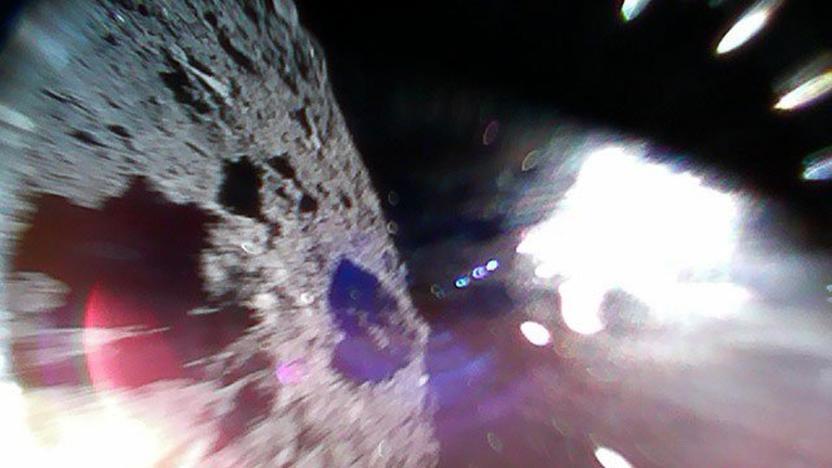
Japan's Hayabusa 2 mission lands on target asteroid
After months of hovering around its target, Japan's Hayabusa 2 mission has made contact. Two of the host spacecraft's landers (ROVER-1A and 1B) have touched down on the surface of the asteroid 162173 Ryugu and have already been hopping around as they take photos (like the one above) and gauge the space rock's temperature. As far as the mission has come, though, it's really just the start.

The wreckage of a few ancient planets formed the asteroid belt
It's exciting to watch Japan's Hayabusa 2 craft close in on its chosen asteroid and start surveying it from up close, but we can still learn things about them from down here. A new study has determined that 85 percent of our solar system's asteroid belt between Mars and Jupiter is made up of the remnants of five or six ancient small planets.
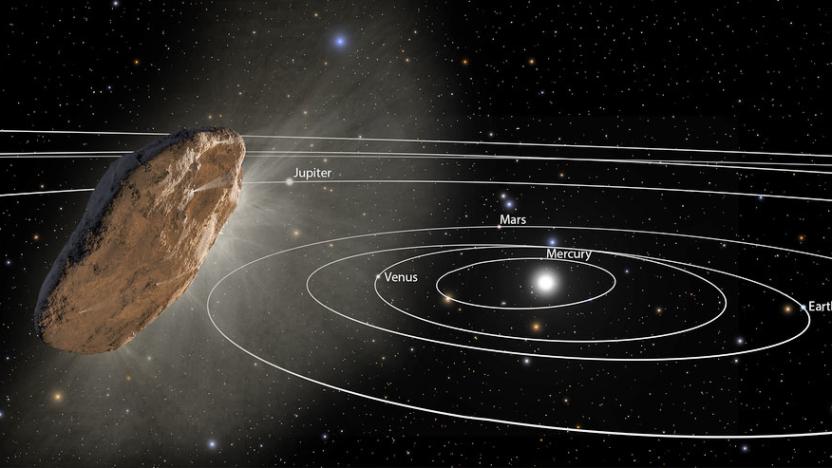
Turns out the interstellar object ‘Oumuamua is a comet after all
Last October, researchers spotted a long, skinny object speeding through our solar system, and they initially pegged it as a comet from another solar system. But as they continued to observe the object, dubbed 'Oumuamua, its properties -- namely a lack of gas and dust surrounding it -- pushed it into the asteroid category, instead. Asteroids are mostly rock, while comets contain ice that becomes visible as it's vaporized into gas and pulls dust off of the comet's surface. However, researchers have kept their telescopes pointed at 'Oumuamua and additional observations have now earned the object a comet label once again.
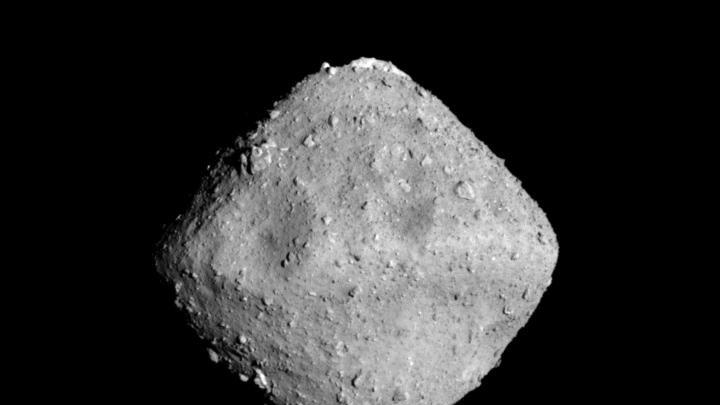
Japanese spacecraft Hayabusa 2 has reached its asteroid target
At approximately 9:35 AM Japanese Standard Time on June 27th, the JAXA (Japanese Aerospace Exploration Agency) spacecraft Hayabusa 2 successfully rendezvoused with its target, the diamond-shaped asteroid 162173 Ryugu. The spacecraft launched on December 3rd, 2014, and has spent the last three and a half years en route. The spacecraft is now just 20 kilometers away from Ryugu.
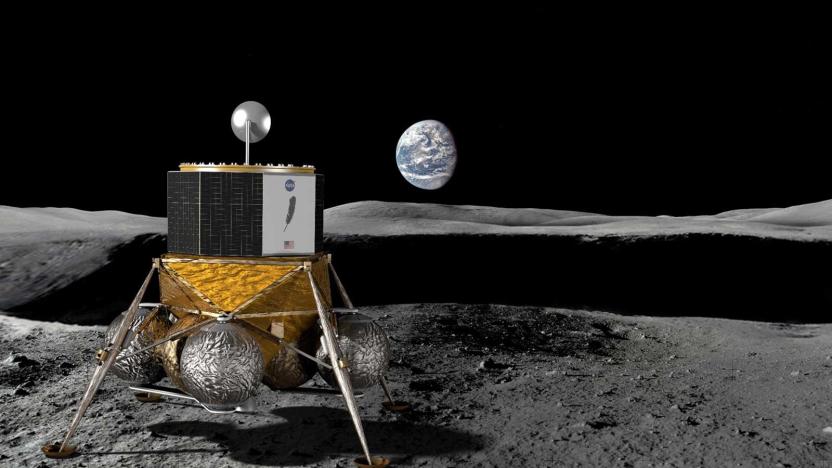
Jeff Bezos outlines Blue Origin's space colony ambitions
It's no secret that Jeff Bezos wants humanity to return to the Moon and otherwise spread its wings beyond Earth. Now, though, he's offering a clearer sense of what that entails -- and it's evident that his ideas stretch well into the long term. In an interview with GeekWire, he explained that he wants Blue Origin to work with NASA and the ESA to create a permanent settlement on the Moon, but will do whatever it takes to make it happen. Don't expect the company to wait if it thinks officials are wasting time, in other words. The company alreadt anticipates launching its Blue Moon lander (above) by the mid-2020s, but that's contingent on getting enough support.

NASA's latest tech investments include shapeshifters and biobots
NASA is no stranger to backing unusual technology if it'll help with exploring the cosmos, and its latest move is proof of that adventurous mindset. The administration has invested in 25 "early-stage" tech proposals that could improve both human and robotic exploration, and some of them are particularly inventive. The Shapeshifter concept you see above, for instance, envisions a horde of robots that combine into different forms to explore virtually every surface on Saturn's moon Titan. It could form an aircraft for high-altitude missions, a ball on the ground or a torpedo for under-liquid expeditions.
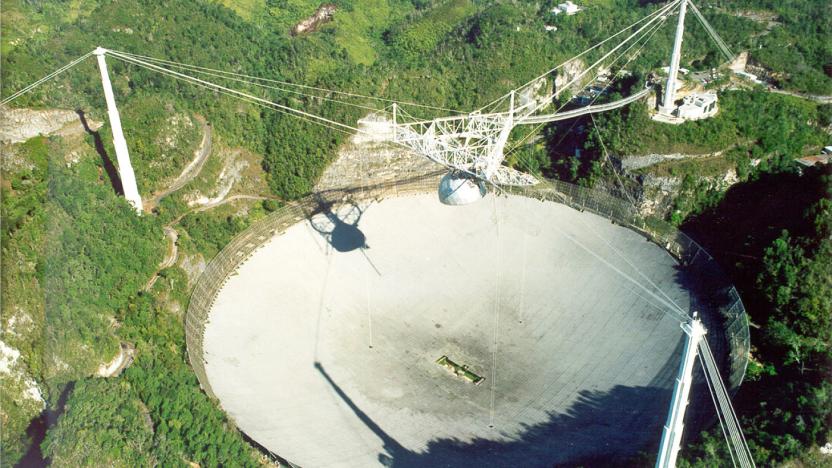
Arecibo is monitoring potentially hazardous near-earth asteroid
The iconic Arecibo radio telescope has faced quite a few challenges over the last ten years, including budget cuts, a funding crisis and damage from Hurricane Maria. While it may not be the largest radio telescope in the world anymore (that honor belongs to Russia's RATAN-600), Puerto Rico's device is still an important asset for detecting dangers to our planet. It's good news, then, that the telescope is up and running again to be able to check out near-Earth asteroid 3200 Phaethon.

That cigar-shaped asteroid might be covered in organic goo
Last month's discovery of a long, thin object floating ominously through space brought about some pretty fevered speculation about the company mankind keeps in this universe. Was it an alien spacecraft? Were little green men about to visit Earth? No to both, seems to be the answer, but while researchers still aren't sure what the object -- named "Oumuamua" -- actually is, they have revealed that it appears to be covered in a thick layer of organic gunk and is icy cold on the inside.

First observed interstellar object is a speedy, cigar-shaped asteroid
Last month, astronomers running the Pan-STARRS 1 telescope in Hawaii spotted an intriguing object moving through our solar system and it became clear pretty quickly that the object, whether it was a comet or an asteroid, had come from outside of our solar system. Now, in a paper published this week in the journal Nature, researchers have described the interstellar visitor, dubbed 'Oumuamua, including its peculiarities as well as its similarities to objects originating in our own solar system.

Scientists want to explore asteroids with a fleet of nanoprobes
Researchers at the Finnish Meteorological Institute (FMI) presented a mission plan today at the European Planetary Science Congress that would allow scientists to observe hundreds of asteroids over the course of just a few years. Their plan is to send 50 nanoprobes -- small space instruments -- into the asteroid belt that lies between Mars and Jupiter to take images and chemical measurements of around 300 large asteroids. "Asteroids are very diverse and, to date, we've only seen a small number at close range. To understand them better, we need to study a large number in situ. The only way to do this affordably is by using small spacecraft," FMI's Pekka Janhunen told Popular Mechanics.








